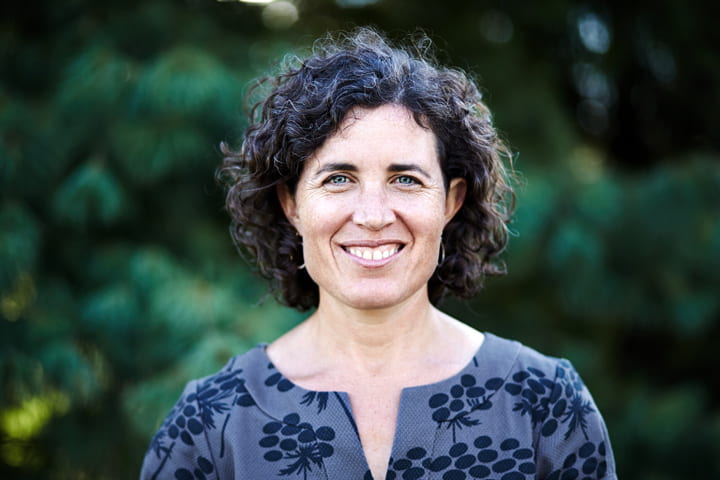To discuss how educators think through and make decisions, an assortment of university and K-12 school leaders gathered in an unlikely place: a high school bathroom.
In a time of education reform, partnerships between K-12 schools and outside universities, organizations and businesses are more important that ever. Washington University in St. Louis and the University of Missouri-St.Louis (UMSL) teamed up with the St. Louis chapter of Schools That Can, an organization devoted to the development of urban education, to help schools navigate the changing landscape.

Heather Corcoran, the director of the College of Art & Graduate School of Art at the Sam Fox School of Design & Visual Arts and a longtime collaborator with the Institute for School Partnership at Washington University, knew that design could be the key. Seeking the help of Elizabeth Kramer, the Assistant Director of Community-Based Design & Sustainability at the Sam Fox School, they set to work on planning and implementing a workshop.
Design thinking is one of Corcoran’s areas of expertise. It is a method of problem solving, that involves research, problem definition, brainstorming and prototyping—all using a visual approach.
Together with the help of her colleagues at UMSL and Schools That Can, Corcoran and Kramer created a three-part event that would introduce school leaders to this methodology.
Although the process can be used by anyone, including students, teachers and parents, Corcoran said that the goal is to teach principals and superintendents as a first step to establish a support network for teachers and students who will learn design thinking in the future.
This is where the bathroom comes in.
Design thinking can be applied to a variety of challenges. “It could be really large like how to supply more water to an area of the planet or small as in ‘How can I reorganize a drawer?’” Corcoran said.
In the case of the workshop, the group wanted to focus on an area in school that school leaders often don’t consider: the bathroom.
At first glance, the concept and function of a bathroom seems simple. But there’s much more to it than meets the eye—its culture, physical design and disruptiveness.
“At our first workshop, we actually met inside of a bathroom,” Corcoran said. “We needed to go to the site of the problem.”
The group role-played scenarios and discussed everything from bathroom passes to bullying to noisy toilet flushes, all with the end-goal of improving the culture that exists around the school bathroom.
The workshop series will consist of two more sessions, covering problem synthesis and prototyping solutions. Corcoran said she hopes that these workshops will spark a dialogue around design thinking and that it will encourage educators to find new ways to integrate design into K-12 schools.
April 2015 | by, Gennafer Barajas
